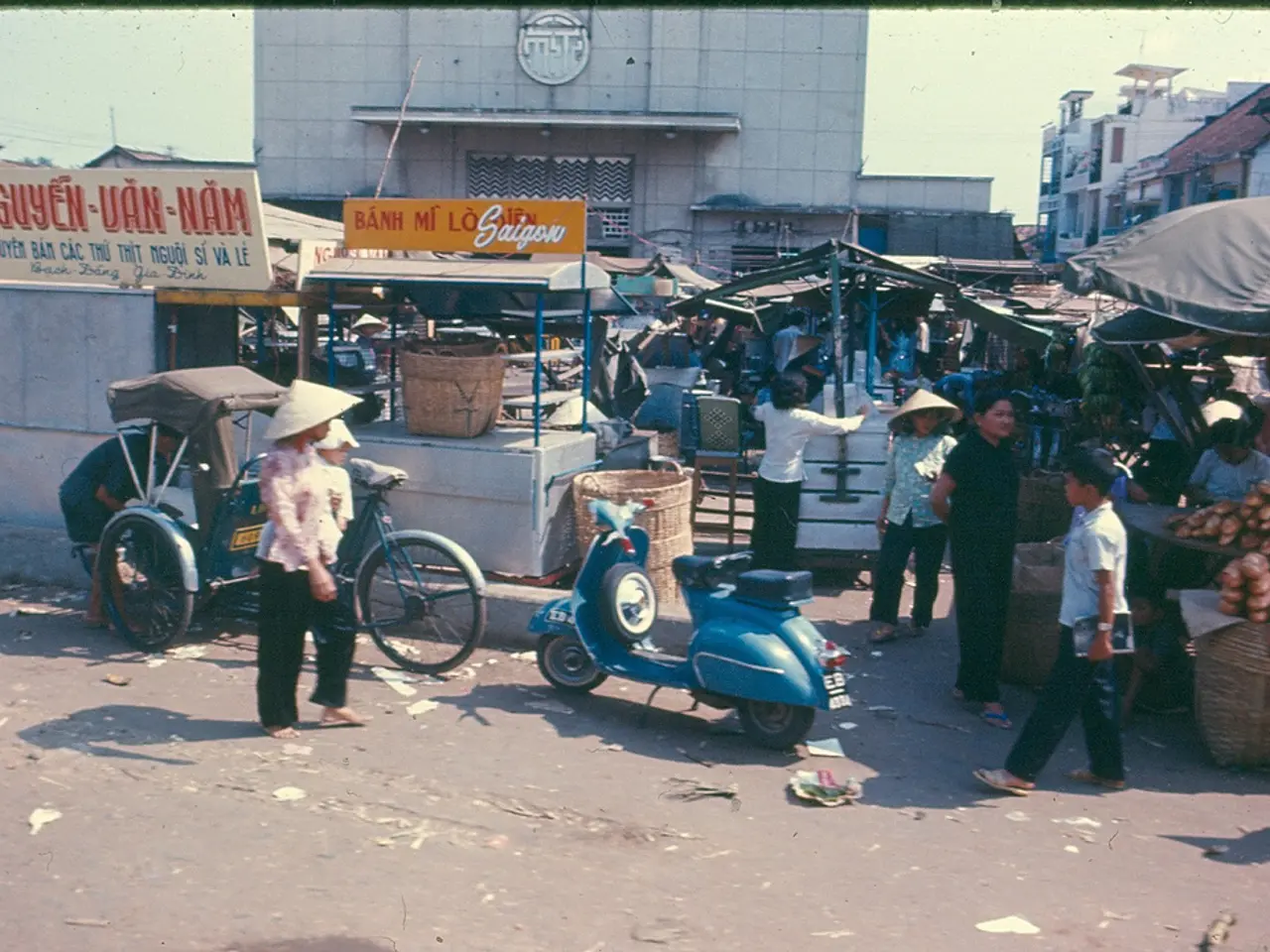Futuristic Visions of the Osaka Expo: A Comparison of Japan's Plans in 1970 and 2025
Expo 2025 Osaka, Kansai, Embraces Sustainable Future While Honoring Past
The Expo 2025 Osaka, Kansai, is currently open and attracting visitors from around the world. This global event, taking place in Japan, is not just a celebration of innovation, but also a tribute to the country's rich history and architectural legacy, as evidenced by the Expo's predecessor, the Expo 1970 Osaka.
The Expo 1970 Osaka, held during Japan's economic miracle and 25 years after the end of World War II, was a turning point in Japanese architecture, urban design, and technology. It showcased cutting-edge designs that blended Japanese aesthetics with modern technology, such as the iconic Tower of the Sun by artist Taro Okamoto and experimental pavilions utilizing new materials and construction methods.
The impact of Expo '70 on architecture was profound. It inspired designs that integrated traditional Japanese influences with futuristic concepts, influencing architects both within Japan and internationally. For example, Japanese-influenced home design featured at the expo had lasting effects on residential architecture.
In terms of urban design, Expo '70 served as a catalyst for urban development. It propelled the creation of new infrastructure and urban spaces around Osaka, including improvements to transportation and public amenities that supported the influx of international visitors. The Expo site itself became a model of planned urban design, balancing large-scale event needs with post-event urban reuse, influencing Japanese city planning and the approach to mega-events in urban environments.
Expo '70 was also a platform to present Japan's technological advancements to the world. It showcased innovations in electronics, robotics, and communications, bolstering Japan’s international reputation as a technology leader. The expo boosted Japan's confidence and investment in R&D, leading to further technological growth in the following decades and setting a precedent for technology-driven exhibitions.
Fast forward to 2025, and the legacy of Expo '70 is evident in the current event's focus on sustainability. The Grand Ring, designed by Sou Fujimoto, draws inspiration from ancient Japanese temple and shrine architecture and incorporates integrated green roofs to change with the seasons. The Japan Pavilion, designed by Nikken Sekkei, is built on the theme "Between Lives" and features a circular wooden structure with its own biogas plant.
The Expo 2025's EARTH MART pavilion, designed by Kengo Kuma, explores food culture and the sense of gratitude and wisdom underpinning Japanese food culture. Visitors can explore the "Marketplace of Life" and "EARTH FOODS 25," and will receive coupons for freshly prepared umeboshi (pickled plums) that will be redeemable in 2050, creating a "food time capsule" and a quarter-century connection between present consumption and future sustainability.
The German Pavilion at Expo 2025, designed by LAVA Architects, explores the concept of circular economy and showcases more than fifty sustainable innovations, including green hydrogen hubs and cellular agriculture.
In summary, the Expo 2025 Osaka, Kansai, is a testament to Japan's commitment to a thriving and sustainable planet and society. It reflects the country's rich architectural and technological history, while also pushing the boundaries of innovation for a greener future. The event's focus on sustainability is a continuation of the legacy started by the Expo 1970 Osaka, which significantly advanced Japanese architecture, stimulated urban development, and showcased Japan’s leading-edge technology.
- The Expo 2025 in Osaka, Japan, honors its past by paying tribute to the art and architecture of the Expo 1970, a turning point in Japanese history.
- Expo '70 was a showcase for Japanese innovation, displaying electronics, robotics, and communications that bolstered Japan's global reputation as a technological powerhouse.
- The current Expo 2025 continues this focus on innovation, but with a emphasis on sustainability, as evidenced by the Grand Ring and Japan Pavilion designs.
- The Grand Ring and Japan Pavilion incorporate traditional Japanese design elements with modern eco-friendly materials, such as integrated green roofs and circular wooden structures with biogas plants.
- The EARTH MART pavilion in Expo 2025 explores Japanese food culture and sustainability, creating a "food time capsule" for visitors to connect with future generations.
- The German Pavilion at Expo 2025, designed by LAVA Architects, showcases sustainable innovations, such as green hydrogen hubs and cellular agriculture, as part of a circular economy concept.
- The event also introduces exhibitions focus on climate-change and environmental science, emphasizing the importance of technology and science for a greener future.
- In addition to these events, visitors can enjoy traditional Japanese food, culture, and art, making Expo 2025 a unique blend of tradition, innovation, and sustainability.




